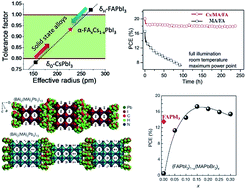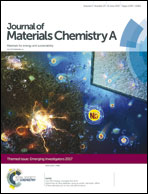Mixed cation hybrid lead halide perovskites with enhanced performance and stability
Abstract
Organic and inorganic hybrid perovskites have emerged as revolutionary optoelectronic semiconductors, which are promising for various applications especially in photovoltaics and light-emitting diodes. Perovskite solar cells have demonstrated unprecedented progress on PCE within a very short time in the history of photovoltaics. Perovskite solar cells have more than 20% PCE and advantages such as easy-to-process and tunable bandgaps have made them favorable for commercialization. Extending the absorption to a longer wavelength and addressing the challenge of stability in metal halide perovskites has become the most important research focus. However, composition engineering could be a potential solution by further tuning the band gap for the metal halide perovskites and, thus, enhance their stability. The mixed cation perovskite is one of the most practical and successful strategies for composition engineering. Here, recent progress on mixed cation metal halide perovskites is reviewed and this includes the development of binary, ternary and two-dimensional/three-dimensional mixed cation perovskites in chemical synthesis and device performance and stability progress. The prospects and challenges for the mixed cation hybrid perovskites are also considered.

- This article is part of the themed collections: Recent Review Articles, JMC A Editor’s choice collection: Recent advances in photovoltaics and Journal of Materials Chemistry A Emerging Investigators


 Please wait while we load your content...
Please wait while we load your content...